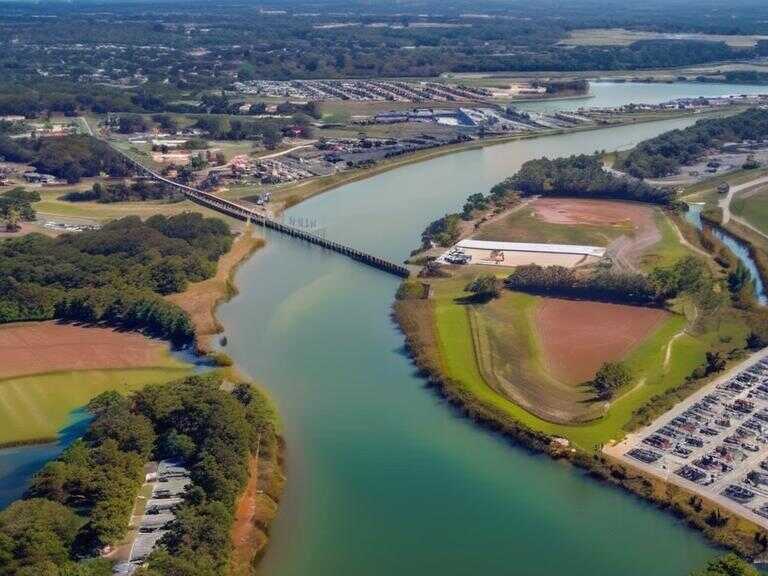
Americans Undeterred by Disasters as Homebuyers Flock to Flood-Prone Texas and Florida
Despite the threat of wildfires and flooding, many Americans are moving to Texas and Florida, attracted by factors like cost of living.

As extreme weather events, such as wildfires and catastrophic flooding, continue to wreak havoc across the United States, a significant demographic shift is underway. Over the past year, thousands of Americans have made the decision to relocate to regions in Texas and Florida that are increasingly vulnerable to these climate-related disasters. Despite the risks involved, these areas have seen a substantial influx of new residents, raising questions about the motivations behind such moves.
The Resilient Migration: A Closer Look
Between July 2022 and July 2023, a remarkable trend emerged in Texas and Florida, evidenced by data from Redfin. In Florida, nearly 69,000 individuals or families chose to purchase homes in counties prone to frequent flooding, including Brevard, Manatee, and Lee. Texas, too, experienced this phenomenon, with approximately 24,000 new residents settling in heavy flood-risk regions like Brazoria and Fort Bend counties during the same period.
What drives this influx of new residents into disaster-prone areas?
Redfin Senior Economist Elijah de la Campa shed light on the matter, emphasizing, "Ballooning insurance costs and intensifying natural disasters are driving thousands of Americans out of risky areas, but those people are quickly being replaced by other people for whom climate change isn't the top concern." This raises the question of what considerations are paramount for those choosing to relocate to these vulnerable regions.
The Higher Stakes of Relocation
For individuals and families moving to Florida and Texas, the decision to settle in high-risk areas comes with significant implications. In Florida, the threat of hurricanes and severe storms looms large. Recent events, such as the landfall of Hurricane Debby near Steinhatchee, serve as a stark reminder of the dangers associated with residing in these regions. New residents in Florida can expect the possibility of severe weather events, with the potential for property damage and disruptions to daily life.
Additionally, the financial implications of moving to these disaster-prone areas cannot be ignored. Homeowners insurance rates have seen a substantial increase in both Florida and Texas, with annual premiums rising by 15% and 36% respectively between 2022 and 2023, as reported by S&P Global. This surge in insurance costs places an additional burden on new residents, who may already be contending with higher housing expenses.
The Wildfire Dilemma
While hurricanes and flooding dominate the weather-related concerns in Florida and Texas, the specter of wildfires poses a significant risk in other regions. States with a high risk of wildfires have also witnessed a notable influx of new residents, with more than 63,000 people relocating to areas susceptible to wildfires in 2023, according to Redfin. Texas, in particular, emerged as a leading destination for those seeking residency in wildfire-prone areas, with counties such as Grayson, Hunt, Midland, Parker, and Wise witnessing significant population growth.
This trend of migration from one wildfire-prone area to another may raise eyebrows, particularly given the well-documented risks associated with wildfires. However, factors beyond climate risk seem to influence these relocation decisions. As highlighted by Redfin's de la Campa, "For a lot of Americans, things like cost of living and proximity to family take precedence over catastrophe risk, which can feel less immediate and more abstract." This perspective underscores the complex calculus individuals and families navigate when considering their residential options.
The Changing Landscape of Relocation Decisions
The movement of Americans toward high-risk areas in Texas and Florida, despite the evident dangers posed by extreme weather events, signifies a profound shift in relocation priorities. While many individuals and families continue to weigh factors such as cost of living and proximity to family as paramount considerations, the influence of climate-related risks appears to be evolving.
As the frequency and intensity of extreme weather events continue to shape the landscape of the U.S., the implications of this demographic shift will likely reverberate across various sectors, from real estate and insurance to disaster preparedness and environmental policy. The resilience and adaptability of Americans in the face of climate challenges reflects the complex interplay of personal priorities, economic considerations, and environmental realities that define the modern relocation phenomenon.
Share news















